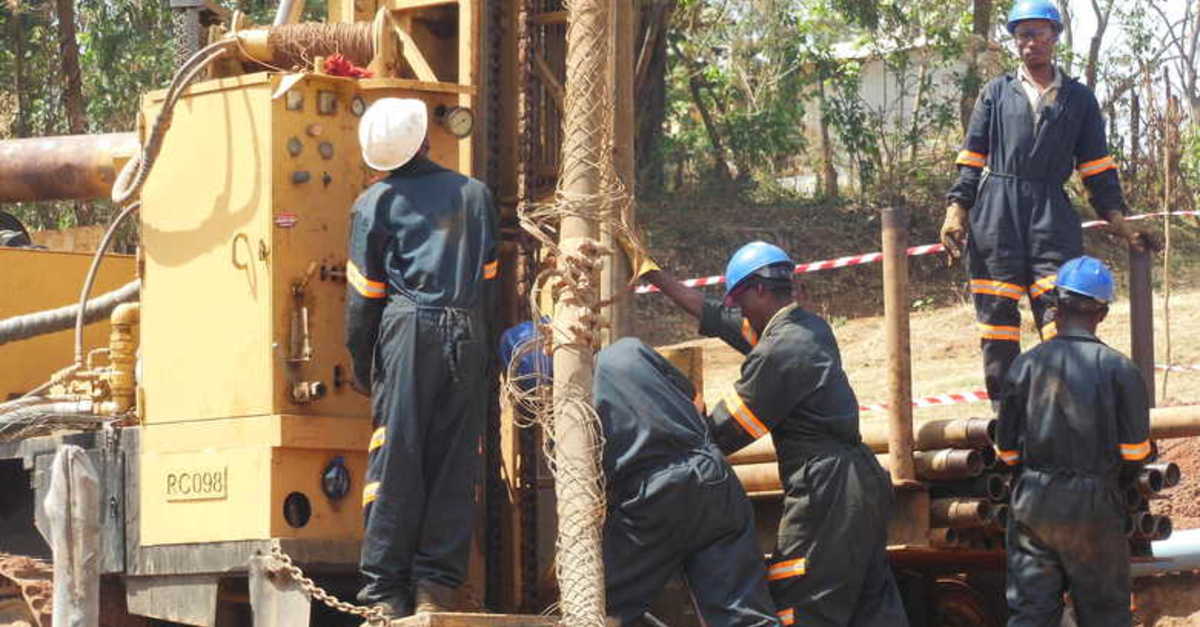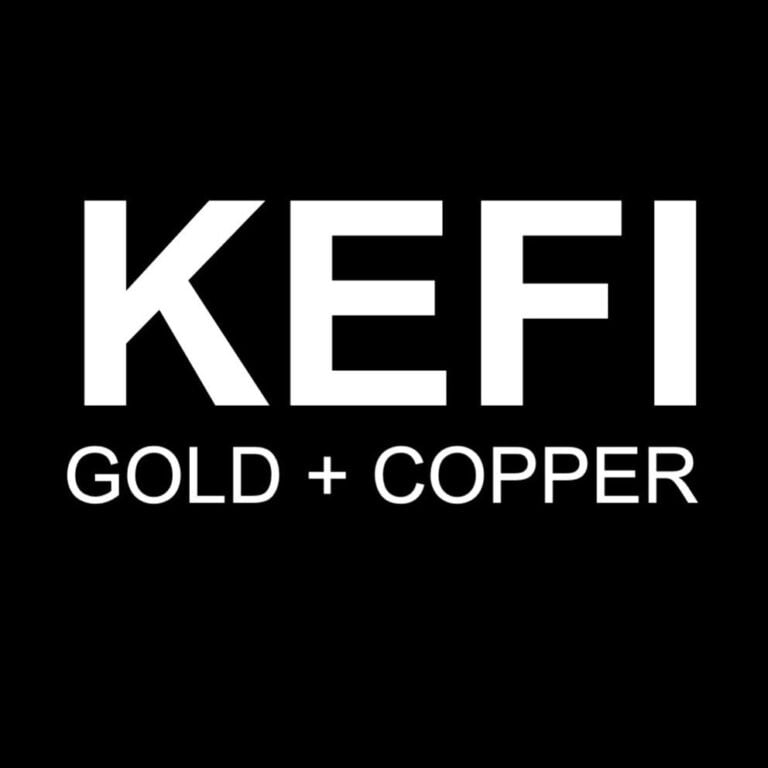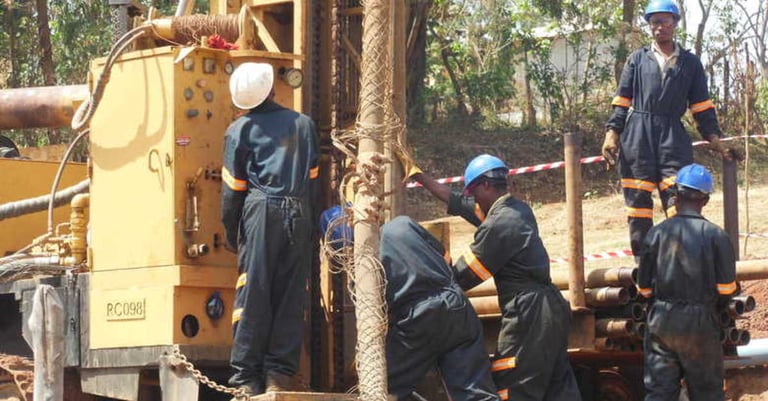KEFI Gold and Copper plc (LON:KEFI), the gold and copper exploration and development company with projects in the Federal Democratic Republic of Ethiopia and the Kingdom of Saudi Arabia, has providd an update on the status of the Hawiah Copper-Gold VMS Project in Saudi Arabia.
Highlights
· Phase 4 of Hawiah’s 2021 drilling programme is nearing completion – approximately 14,000m of 15,500m completed
· Updated Hawiah Mineral Resource Estimate (“MRE”) on track to be reported in Q4 2021
· The upgraded and expanded MRE is likely to enhance Project economics in the Preliminary Feasibility Study (“PFS”) due to higher grade and increased tonnes
· Metallurgical testing, environmental and hydrological programmes are progressing well
· Project work streams on track to achieve KEFI’s target of Hawiah commencing development in 2023
Harry Anagnostaras-Adams, Executive Chairman of KEFI, commented:
“KEFI continues to add significant value to our Hawiah copper-gold-zinc-silver project in Saudi Arabia, where we reported a maiden Mineral Resource Estimate of 19.3 million tonnes at 1.9% copper-equivalent in-situ in August 2020, after starting drilling less than 12 months earlier. At current market prices this represents a current in-situ value of over US$3bn worth of metal.
“And now another 12 months later, the results indicate we will within a few months be in a position to report a larger resource at higher grade. Recent infill drilling has also better defined the ore lodes and will upgrade a substantial portion of the near-surface Inferred Resources to the Indicated category.
“Our team has also been advancing key work streams for the Preliminary Feasibility Study with metallurgical, environmental and hydrological programmes now well advanced. This work is supporting the assumptions of our 2020 Preliminary Economic Assessment, including that all four primary metals (copper, gold, zinc and silver) will be recovered and contribute to Project revenue.
“An economic project has already been identified, but we are still very much in the early days of defining the full potential of the Hawiah Project. The ore lodes drilled to date remain open and we have yet to locate the ‘feeder zone’ to the massive sulphide lodes, which represents a separate and potentially much larger-scale target.
“With copper prices now more than 30% higher than a year ago, Hawiah continues to increase in value and strongly complements our Tulu Kapi Gold Project in Ethiopia.”
Background
Gold & Minerals Limited (“G&M”, 34%-owned and operated by KEFI) commenced drilling at Hawiah in September 2019 and quickly confirmed a large-scale Volcanogenic Massive Sulphide (“VMS”) style of mineralisation underlying the outcropping 4.5km long gossanous ridge.
Whilst mineralisation is continuous across the 4.5km strike length, three distinct massive sulphide ‘lodes’ have been delineated in the north and south of the Project area, representing areas of greater sulphide thickness and containing copper (“Cu”), gold (“Au”), zinc (“Zn”) and silver (“Ag”) with intercepts of up to 5% copper-equivalent.
A maiden MRE was announced on 19 August 2020 with an initial inferred resource of 19.3Mt at 0.9% Cu, 0.8% Zn, 0.6g/t Au and 10.3g/t Ag.
The key outcomes of the Hawiah Preliminary Economic Assessment (“PEA”) announced on 22 September 2020 were:
· Hawiah is a high-priority project, with a significant maiden resource of 19.3Mt at 1.9% copper equivalent in-situ, after only seven months of initial drilling;
· the MRE alone potentially supports a production rate of 2Mt p.a. for seven years for net operating cash flow of c.US$70 million p.a. at (then) current metal prices. After initial and sustaining capital expenditure (then estimated) of c.US$222 million and c.US$46 million respectively, this would indicate an estimated net cash surplus of over US$200 million before financing costs and tax; and
· clear potential for expansion of resources with further drilling below the currently drilled depth of 350m of this structurally consistent tabular structure.
On 13 April 2021 G&M announced the results of the Phase 3 drilling programme which:
· doubled the strike and plunge extension of the Camp Lode structure from the 2020 MRE area, remaining open and with copper grades increasing down-plunge as anticipated by the geological model; and
· confirmed that the Crossroads Lode also remained open down-dip and down plunge.
Phase 4 Drilling and Updated MRE
The Phase 4 drilling programme is nearing completion with approximately 14,000m of the 15,500m programme having now been drilled. An updated MRE to incorporate Phase 3 and Phase 4 drilling will be initiated on receipt of the final assay results, with the updated MRE expected to be completed during Q4 2021.
Assay highlights from the Phase 4 diamond drilling programme include:
– HWD-097 – 22.9m (14.5m Estimated True Width (“ETW”)) at 1.1% Cu, 0.5% Zn, 0.61 g/t Au and 9.2 g/t Ag
– HWD-099 – 19.7m (11m ETW) at 0.7% Cu, 1.4% Zn, 1.54 g/t Au and 14.5 g/t Ag
– HWD-102 – 22.2m (12.2m ETW) at 1.6% Cu, 0.2% Zn, 0.52 g/t Au and 9.0 g/t Ag
– HWD-104 – 10.1m (5.5m ETW) at 1.5% Cu, 0.2 Zn, 0.16 g/t Au, 3.36 g/t Ag
– HWD-106 – 5.7m (4.4m ETW) at 0.9% Cu, 2.4% Zn, 0.71 g/t Au and 10.0 g/t Ag
– HWD-108 – 7.4m (4.7m ETW) at 1.3% Cu, 1.3% Zn, 0.47 g/t Au and 8.6 g/t Ag
All assays received to date for the Phase 4 diamond drilling programme are tabulated in Appendix 1 to this announcement. A long section showing the location of the Camp Lode Phase 4 drill intercepts forms Figure 2 in Appendix 2 and is available through the appended PDF accessible here:
The primary focus of the Phase 4 drilling has been to improve the drilling resolution in strategic portions of the Hawiah ore body. This should allow for approximately 10Mt of resources to be upgraded from Inferred to Indicated classification in the upcoming MRE. This will enable mine design and an initial Ore Reserve Statement as part of the PFS.
The updated MRE is also likely to have slightly better average grades as well as a substantial increase in tonnes, primarily relating to 2021 drilling extending the Camp Lode 670m down plunge.
An encouraging case is emerging for a potential +30,000 oz gold heap-leach open-cut operation of oxide material whilst the main Hawiah Project is being developed. This scenario of mining and leaching near-surface gold mineralisation will be evaluated in parallel with the updated MRE.
KEFI has to date referred only to internal PEA-based Project economics published on 22 September 2020 and based on the Maiden MRE.
PFS Preparations
Preparations and supporting works for the PFS remain a key focus for the team with metallurgical testing, environmental and hydrological programmes well advanced.
The 30-man base camp at Hawiah is now fully operational and plans are underway to increase the capacity of this camp.
The metallurgical test work is also well advanced, and a further bulk sample has been sent to independent consultants for pilot plant testing.
An independent environmental baseline scoping study is ready for submission to the Saudi Arabian environmental authorities in preparation for further base line studies as required under the Saudi Arabian Mining Investment Law. At the same time geo-hydrogeological studies are in progress and a consultancy group are on-site performing pump testing on a number of existing boreholes ahead of targeted pump testing and groundwater modelling.
Enquiry documents have been issued to a select group of consultants who KEFI believe are well placed to complete the additional elements required for the completion and sign-off of the PFS. Tender documents will be received by the end of August 2021 with review and final appointments taking place in September 2021.
These supporting works are aimed at ensuring that the Project can continue to be rapidly progressed towards KEFI’s target of Hawiah commencing development in late 2023, to complement Tulu Kapi production which is scheduled to have already started.
This work programme will potentially also complement the investment criteria of the Saudi Industrial Development Fund (“SIDF”), which is mandated to prioritise mining with project loans of up to 75% of capital requirements, which may also include the final stages of the exploration process. The combination of Saudi Arabia’s relative stability, the availability of domestic capital and KEFI’s long-established joint venture structure, is expected to make the project financing aspects much more straightforward in Saudi Arabia than they are in Ethiopia.




































